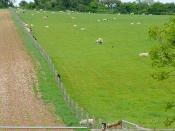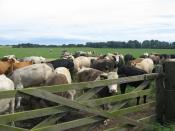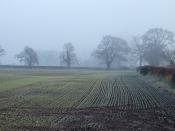The early mixed farming communities of 200-1000 AD consisted of family groups of people, who chose areas suitable to the type of farming in which they wished to indulge. They settled in areas, cleared the land and grazed their animals in the nearby area. These people smelted iron ore to make tools for themselves.
Although these communities are referred to as iron-age people, they only used iron tools if they needed to. Apart from the manufacture of spears, they used tools such as hoes and axes for clearing the natural forest as they extended their arable area. They would also require axes for cutting trees for firewood, and other daily needs. Another use for iron was in ploughing fields. With better implements, the farmers were able to grow more crops.
Better crops lead to a larger population. This better fed population was healthier, and so survived and provided labour to grow even more.
Crops such as millet, sorghum, legumes and squashes and pumpkins were cultivated. Fields that had been cultivated in the past were used to graze cattle, but it is likely that they did have to graze their animals in areas distance from the villages. At first, meat requirements were obtained from hunting, and depending on the areas in which they lived, the farmers would supplement their protein sources with shellfish and fish.
As the population became more settled and grew larger, a political organization developed. At first, the small groups, which were not much larger than a family group, did not seem to have much of a hierarchy. No one seemed to be wealthier than another, as not much saving of crops was done. There do seem to have been some chiefs in existence. However, as the population grew larger, hierarchies developed, and there is evidence that...


